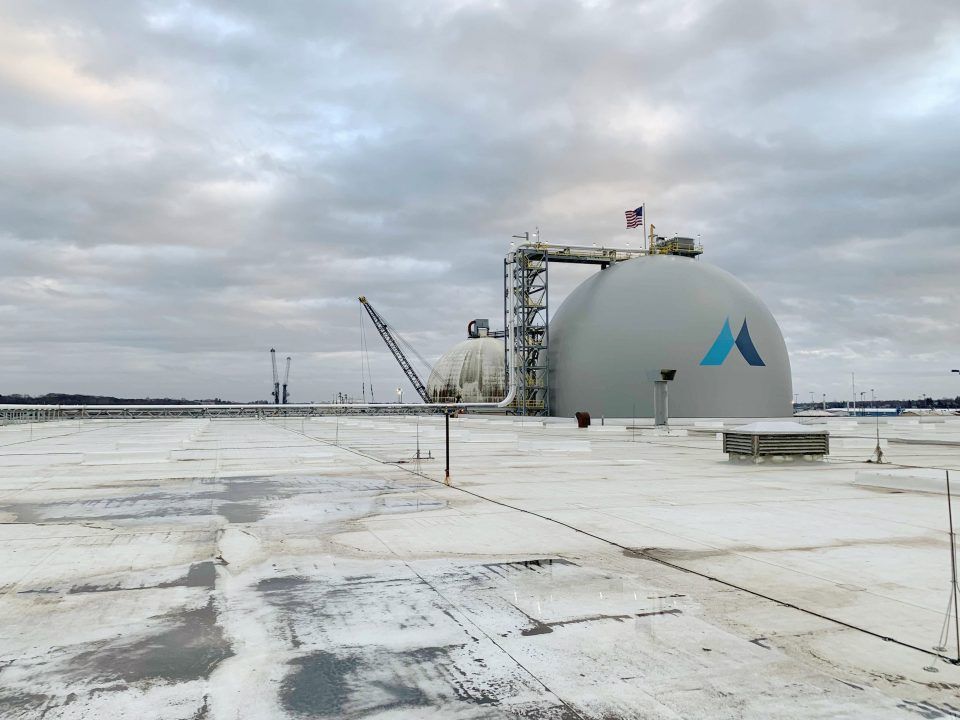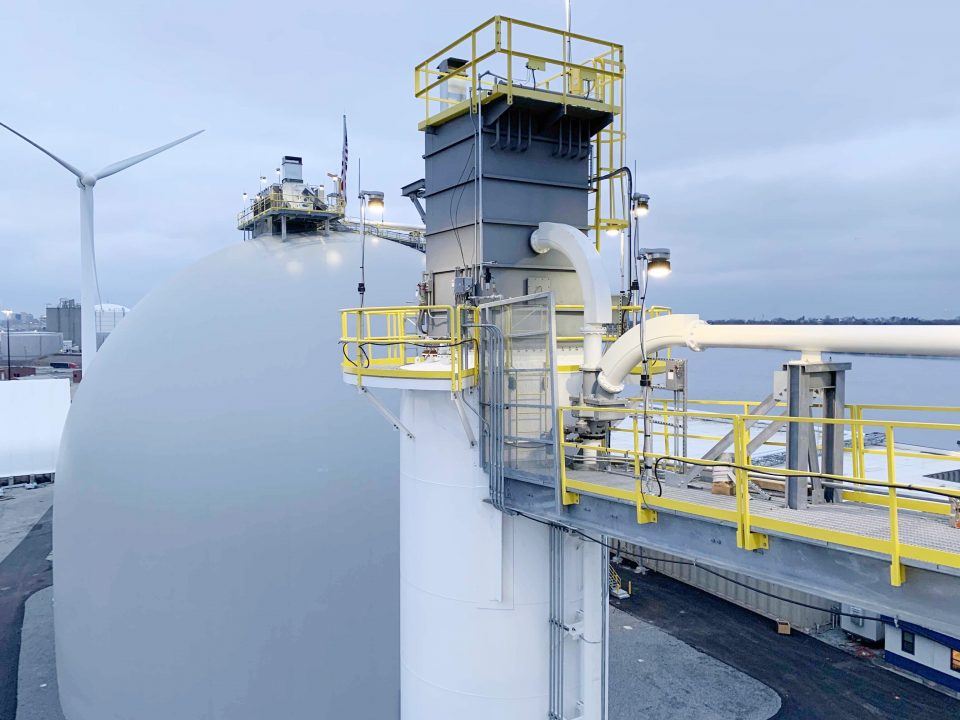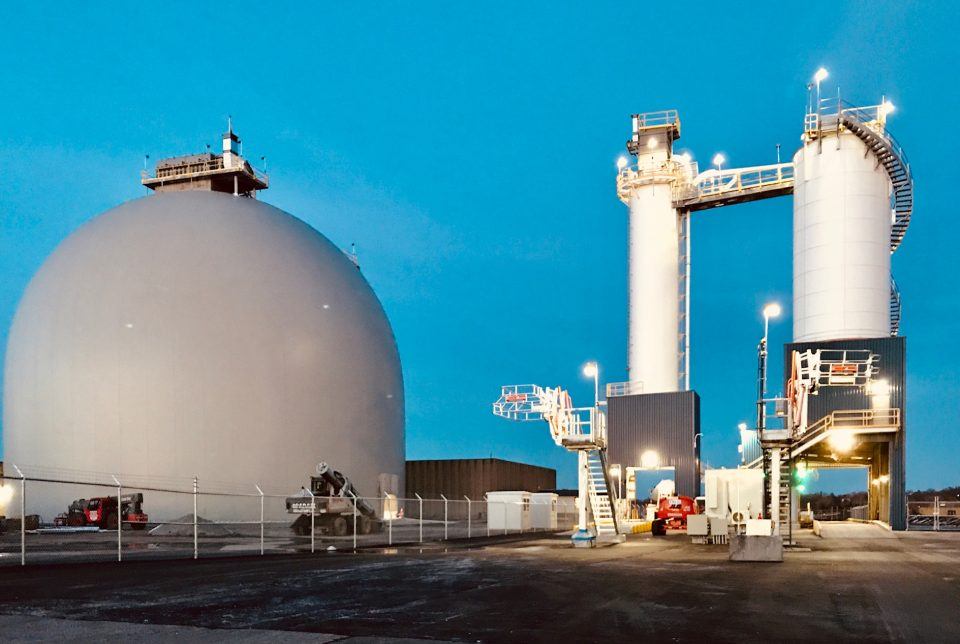In recent years McInnis Cement has been busy building itself as a serious player in the industry.
As the newest entrant in the North American cement market, the company’s plant in Port-Daniel–Gascons, Canada, is the first new plant to serve eastern Canada, the U.S. eastern seaboard and the Great Lakes region in more than 50 years. McInnis’s objective is to supply customers with superior-quality products consistently produced and reliably distributed, based on sustainable development principles.
As part of their effort to grow business, McInnis built a Providence, Rhode Island, facility, and after two years in operation, the company was ready for an upgrade.
“The initial 30,000-ton flat storage warehouse has been very functional, and it will continue to be used in conjunction with the new storage dome. However, the dome storage was elected for the expansion because the warehouse operations had various limitations. While we were reclaiming from that, we couldn’t offload a ship,” said project director Dominic Demers, adding that unloading would often pause for 10 to 12 hours a day during warehouse reclaim. “For phase two, we wanted to combine operation flexibility and maximum utilization of our growing marine fleet.”

Two challenges had to be addressed straightaway with this new project: The site’s soil wasn’t ideal, and a 110-foot height limitation influenced how the new infrastructure could be designed. The height restriction in particular “made it uneconomical for us to build silos, and we wanted to keep the operating cost low,” said company director of communications Maryse Tremblay. “A dome was the natural choice for us.”
Dome Technology completed construction in 2019. The DomeSilo stands 134 feet in diameter with a storage capacity of 40,000 metric tons, and McInnis will continue utilizing its flat storage as well. To maximize the terminal’s abilities, McInnis selected a barge unloader rated at an aggressive 800 metric tons per hour.

Dome Technology executed a prime contract directly with McInnis for the dome storage, structural steel, and mechanical work for pneumatic transport and reclaim of the stored cement material. More specifically, that work required installing a truck lane, steel storage silo, DomeSilo, structural-steel convey piping support, stair platform with connecting structural-steel bridge to the dome apex and a reclaim tunnel. The team also installed an FLSmidth Ful-Floor reclaim system.
In addition, piping on the loading side needed to be routed up and over the existing warehouse; it was then anchored to a structural stair tower as it climbed to the dome apex. Load bearing on the warehouse wasn’t an option, so a truss and structural steel carry the weight.

Photo courtesy CIMA+McInnis
Part of keeping operating costs low came from the system’s ability to keep product flowing. A dome with automatic reclaim allows McInnis to offload a ship while simultaneously reclaiming — no need to pay demurrage costs.
“What that’s going to allow us to do is to offload to the dome without having to stop. So it will really reduce our unloading costs,” Demers said. Tremblay agreed, adding that this new system reduces operating costs by not having to double-handle product inside the warehouse.
By Rebecca Long Pyper for Dome Technology
Editor’s note: This is an excerpt from an article published in the April 2020 issue of World Cement. Banner image courtesy CIMA+McInnis.